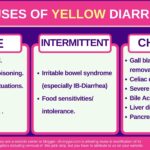Cholestyramine & Weight Loss: 5 Facts You Should Know.
Our content is not intended nor recommended as a substitute for medical advice by your doctor. Use for informational purposes only.
1. How does cholestyramine work?
Cholestyramine is a bile acid sequestrant. It acts as an antidiarrheal and lipid-lowering medication by binding to bile acids inside the intestine.
Questran (cholestyramine) binds to the bile acids secreted from your liver into the intestine. This binding prevents leads to:
- Inactivation of bile acid and prevention of Bile Acid Diarrhea.
- Prevention of its re-absorption, which results in lipid-lowering effects.
2. It is rare for cholestyramine (Questran) to cause weight loss.
Weight loss is seldom reported with Questran (cholestyramine). However, a small study (including nine patients) found that cholestyramine can delay stomach emptying.
Moreover, the use of Questran is not approved for weight loss. The approved uses of Questran are:
- Treatment of bile acid diarrhea.
- Treatment of pruritus resulting from biliary obstruction.
- Treatment of increased blood lipids.
- Used in graves disease (hyperthyroidism) as adjunctive therapy.
3. Mechanisms of weight loss with cholestyramine.
As proposed by one study, Questran delays gastric emptying. The delayed gastric emptying decreases the appetite and may cause anorexia, leading to weight loss in the long term.
However, The study was on a small number of patients, and no large clinical studies evaluated the actual effects of cholestyramine (Questran and Questran Light) on weight loss.
4. Long-term Cholestyramine may cause vitamin deficiency.
Cholestyramine may hinder the absorption of Multiple vitamins and minerals such as (reference):
- Folic acid.
- Iron.
- Calcium
- Vitamin A
- Vitamin D
- Vitamin E.
- Vitamin K.
Those are essential supplements for your health and well-being. But moreover, taking cholestyramine for weight loss causes a deficiency of such important elements. The deficiency is particularly more prevalent when:
- Long duration of cholestyramine use for weight loss.
- Higher doses.
Supplementation of iron, folic acid, calcium, and fat-soluble vitamins will prevent such deficiency. Check the need for such supplements with your doctor or dietitian.
5. Standard Questran Vs. Questran light weight loss.
Both Questran and Questran Light contain cholestyramine. Standard Questran contains sucrose besides cholestyramine, while Questran Light contains Aspartame.
The caloric value of Questran Light is much lower than the standard Questran because Aspartame is a low-calorie artificial sweetener.
Theoretically, Questran Light is more suitable for people who want to lose weight. However, no evidence suggests the use of Questran Light for weight loss.
Moreover, The Aspartame in Questran Light is a high FODMAP sugar that can induce diarrhea in FODMAP-sensitive people as those with IBS-D.
6. Other side effects of long-term cholestyramine use.
- Dyspepsia, bloating (these side effects decrease if cholestyramine remains suspended in liquid for hours).
- Constipation.
- Decreased taste sensation.
- Decreased absorption of many concurrent medications.
- Anxiety, dizziness, drowsiness, headache.
- Perianal skin irritation or skin rash.
- Abdominal pain.
- Dental discoloration (blackish).
- It may induce anemia and bleeding.
- Joint pain.
- Vitamin deficiencies (explained before).
In conclusion, More research is needed to define the link between cholestyramine and weight loss. Don’t take Questran or Questran lightly for weight loss due to the lack of evidence and the high incidence of side effects.
- Evidence-based
- Written by a doctor.







